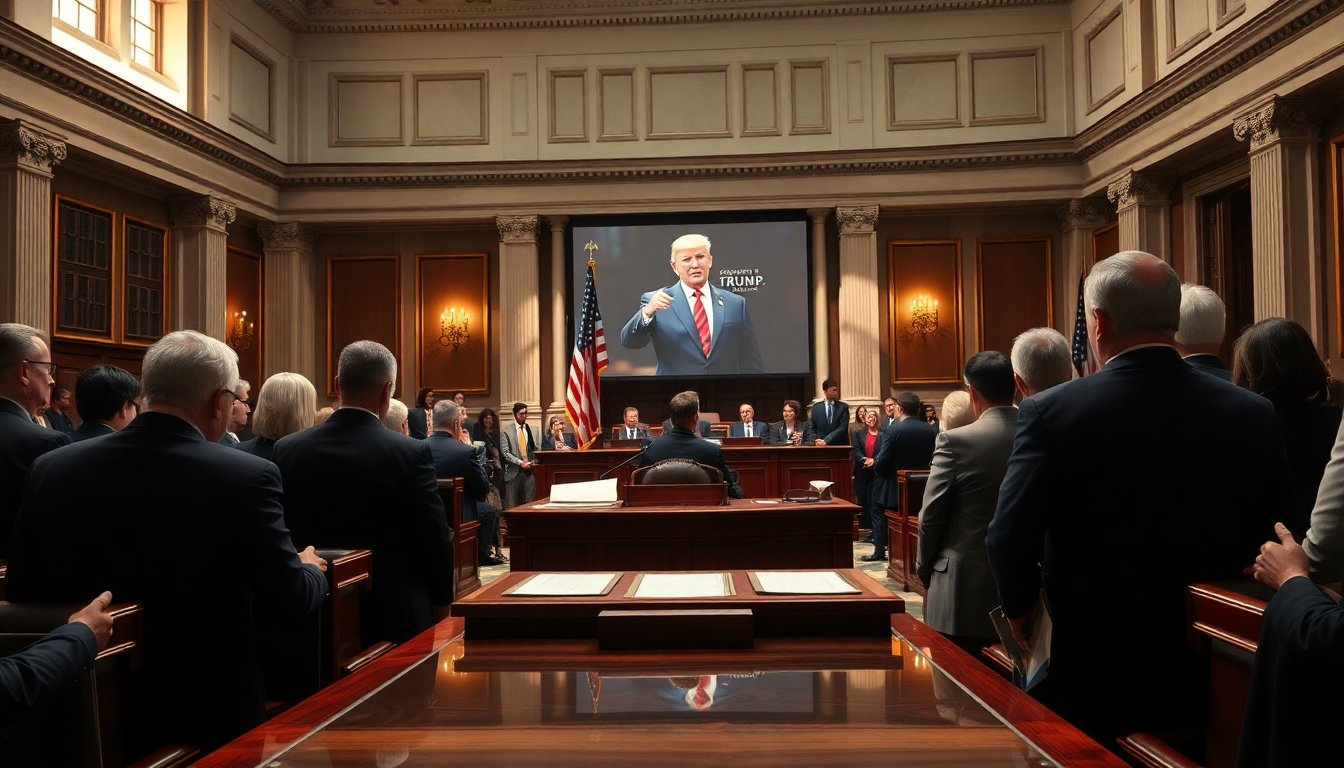Table of Contents
In a significant political event, Congress convened to officially acknowledge the election victory of Donald J. Trump. This session was notably devoid of the controversy and chaos that characterized similar proceedings in the past. The atmosphere during this certification reflected a political landscape that has shifted considerably.
Vice President Kamala Harris took the lead in announcing the results, bringing a sense of order and finality to the proceedings. Her calm demeanor emphasized the importance of a smooth transition in governance, contrasting sharply with the heated debates and protests that had marred previous certification processes.
The facts
The certification of an election victory is a crucial constitutional procedure that solidifies the legitimacy of the elected candidate. In this instance, it marked a definitive conclusion to a contentious electoral cycle. The previous election cycle had been punctuated by allegations of fraud and widespread unrest, leading to significant challenges in the certification process.
Four years ago, Congress faced an unprecedented situation as lawmakers grappled with a divided political climate. That session was marked by fierce opposition, protests, and even a dramatic breach of the Capitol. In contrast, the recent certification was characterized by a much more subdued and orderly approach, highlighting the evolution of political discourse.
Key moments from the session
As Vice President Harris announced the results, the atmosphere was charged with anticipation but remained respectful. Trump’s victory was confirmed with overwhelming support from party members, reflecting a unified front among Republicans. This session indicated the party’s alignment behind Trump, emphasizing the importance of unity following election outcomes.
Implications of the victory
Trump’s victory holds significant implications for the future of the Republican Party and the broader political landscape. It sets the stage for a potential resurgence of Trumpism, a movement that has reshaped the party’s identity and policies. As the GOP rallies around Trump’s leadership, the party faces the challenge of addressing internal divisions while appealing to a diverse electorate.
The political ramifications extend beyond party lines, as Trump’s presidency is expected to influence national policies and international relations. His approach to governance and key issues such as immigration, healthcare, and foreign policy will be closely scrutinized by both supporters and critics alike.
Looking ahead
The certification of Trump’s victory is not merely a procedural formality; it signals a new chapter in American politics. The nation watches as the new administration prepares to implement its agenda, which promises to be both transformative and contentious. As the GOP navigates this new political terrain, the balance of power in Congress will play a pivotal role in shaping the legislative landscape.
Moreover, the implications of this certification extend into the upcoming midterm elections, where Trump’s influence may dictate the party’s strategies and candidate selections. Voter sentiments, party loyalty, and emerging issues will all be key factors as the political arena evolves.
The recent certification of Donald Trump’s election victory serves as a reminder of the intricate dynamics of American democracy. It highlights the significance of orderly transitions and the power of political parties in shaping the future. As the nation moves forward, the lessons learned from this election cycle will undoubtedly resonate in the years to come.


